|
Dating from 1637, this tower house and attached three story building overlooking Bangor Harbour is the earliest building to survive in Bangor from its layout as a modern town following its granting to James Hamilton by James I in 1605. The white rendered modern looking visitor centre is part of the original construction which is reported to have had a second tower abutting the far gable. These 'flankers' would probably have had conical roofs in the Scottish style, similar to the 'White House' in Newtonabbey (https://www.marksoftime.com/the-plantation.html) The unrendered gable wall behind the tower has a 'crow stepped' finish at the top, an early example of the Scottish Baronial style. Apparently the building may never have been fully completed or used as a customs house (the mid seventeenth century wars may have got in the way). It was in ruins in 1744. Then it was converted into dwelling houses. Used by the coastguard, the battlements may have been added during the Napoleonic period when Martello towers were being constructed elsewhere. It was a photographic studio in the late nineteen century and sold to the town council in 1923. They converted it to hot sea water baths. These closed in 1954. It was then used for an antiques business until being converted into the tourist information centre in 1982. A very unusual and rare survivor.
0 Comments
Happy St Patrick's Day. This image is inspired by a psalter - a book of psalms- dating from c.800AD. Such books were the staple of monks and something similar may even have been used by Patrick. Monks learned off the 150 psalms as part of their training but in Ireland these were often divided in to 'three fifties'. This was the case with the Fadden More Psalter where the first page of each of the fifites was decorated. The psalter was discovered in a bog in Co Tipperary in 2006 having survived hundreds of years in its damp embrace. Painstakingly restored by the National Museum of Ireland over four years, it is now on display there. Only the top right hand corner of the first page can be made out clearly and I have used this to build up this drawing. A translation of the Latin texts given on the bottom half of the drawing.
In front of Bangor Caste is this sundial, clearly relocated from the medieval abby to become an object of interest. A. plaque at the base states: ' This sundial served the important monastery at Bangor. Though damaged it is a survival from the Late Early Christian period, probably the tenth to the twelfth centuries. Three main rays indicated the main daytime services at the third sixth and ninth hours but only the noon ray is now clear. An early sundial has been reconstructed at Nendrum...(illegible) ... Co Down and a third can been seen in Clougher Cathedral Co Tryone' . Given the importance of worship at set times in a monastery, the sundial was a key asset. An amazing survival, given that so little else of the abbey survives.
Bangor Castle is a large county house in the Jacobean style, set within extensive grounds adjacent to the site of the medieval Bangor Abbey. It has a date stone of 1852 and was purchased by the district council in 1941 who demolished the surrounding estate (demesne) wall and opened the grounds to the public. In 1952, 100 years after its original construction, it became the town hall of Bangor. It is quite a composition. On this west elevation a clock tower surmounts what appears to be a remodelled tower house and beside this the entrance door projects surrounded by elaborate stonework. Behind this, three window bays surmounted by pointy dormer and then two wide bays with gables, one of which has a projecting rectangular window over two floors. The other elevations overlooking the road from the town below are more formal and grand, but this one appears to be trying suggest building of great age and development, something like the truly Jacobean extension to the medieval Donegal Castle (www.marksoftime.com/blog/258) inside are some finely decorated rooms and stained glass. It is worth a visit.
The west window of Bangor Abbey, Co.Down. This is over the entrance door in the tower of the building and set within a blocked up fifteenth century arch. The window is thought to date from 1693 when the top of the tower was raised or rebuilt and a steeple added. The rest of the tower is understood to be fifteenth century. it was originally part of the abbey on this site which was dissolved in 1542 and then burnt during an attempted colonisation of the Ards Peninsula in 1572. That abbey, founded in the 550's was of some renown and attracted students from across the world. A manuscript made here (the Bangor Antiphony) survives in Milan. Declining during the Viking period from the ninth century, it had a second period of importance during the twelfth century when St Malachy, a key reformer in the Irish church, was its abbot. in 1603, on the ascension of James I, lands including Bangor were granted to Sir James Hamilton. He had the Abbey rebuilt as a parish church between 1617 and 1623. All of this, apart from the tower, was removed in 1832, when work to extend the building resulted in the walls becoming unsafe and having to be taken down. Today, the larger than usual size of the tower relative to its church, marks it out as a structure of greater than normal antiquity. The west window, clearly very old itself, reinforces this impression as it is obviously part of an infill with smaller stones surrounding it than on the main tower. It is tempting to see the figure head at the top of the window as a fragment from the earlier building, particularly as a second headstone over the entrance door below (not on this drawing) is clearly of a seventeen century face. However,it appears to be very much part of the design of the window, with the covering on its head billowing out to form part of the cornice of the window. The stained glass is nineteenth century by Myer of Munich, in common with most Church of Ireland churches on the island. All in all a place of great interest and antiquity, which repays a closer look.
Tully Castle, Co. Fermanagh. Built in 1619 as part of the Plantation of Ulster for John Hume of Berwick in the Sottish Borders. A T shaped fortified house surrounded by a stone bawn wall with projecting circular stepped bartizans in the Scottish style. The building was only occupied for 20 years being attacked and destroyed in the 1641 rebellion. Today it is a Monument is State Care by the shores of the lough with fine walks. Worth a visit.
Dunree Fort, One of a number of fortifications along Lough Swilly in Co Donegal. This one open to the public. The site of an early temporary gun battery from c.1798 in the Napoleonic Wars, some of its cannon came from the French ship La Hoche, captured in October 1798 following engagement with a British Squadron at the mouth of the Lough. Wolfe Tone, one of the leaders of the United Irishmen's rebellion, was also on the ship and captured. A permanent fortification was approved in 1805 and a date stone of 1812 is carved over the entrance door. The fort was modified in 1847 to allow larger more modern guns (two 5.5 inch howitzers) to be installed . It's 'Martello tower' was demolished in 1900 as it obstructed the field of fire from new fortifications on top of the nearby hill. The site, along with other fortifications on the Lough continued as a British naval base even after the partition of Ireland in 1922 due to its perceived importance should naval conflict ever resume. Three 'treaty ports', Lough Swilly, Berehaven Co Cork and Spike Island (near Cobh) Co.Cork were held by Britain until 1938. When war resumed a year later they were not handed back. The site was occupied by the Irish military until the 1980's. Today it remains a dramatic fortification, particularly when seen, as here, from the pier below. The museum is good, but so also is the walk to the top of the nearby fortified hill among former military cabins, full of atmosphere, as they slowly decay back into the earth.
The River Dee as sketched from Dava Terrace last September. At this point it is leaving the town and curving south towards Wales though some late Victorian housing. It is a busy place full of rowers and pleasure boats. On the opposite bank is a flood plaIn, used as a park, but this view is dominated by the church of St Paul. Built between 1876 and 1905. it has a very elegant spire and the vestry to its side is half timbered and fits well into its domestic surroundings.
The tower of the church of St Peter and Paul, beside the castle of Melnik, overlooking an important crossing point at the confluence of the the Elbe and Vltava rivers in the Czech Republic. The church has been rebuilt a number of times since its original construction in 1000. The tower dates to 1488 with its Baroque spire added in 1681. The main external appearance, however, dates to an extensive restoration between 1910 and 1916. The castle also dates it origins to the 9th century and was largely rebuilt in the 17th. The Lobkowicz family owed the castle from 1753 to 1948. Ownership was returned to them on the fall of communism in 1992. the castle has since been extensively conserved and is now open to the public.
The church at the centre of Herrnhut in Saxony. Focus of the town plan, this was the original settlement of the Moravian Church. The town is currently partnered with Gracehill in Northern Ireland and Bethlehem in Pennsylvania, USA, in a bid to UNESCO for joint transnational world heritage status. Herrnhut, however, is also famous for its Christmas star factory
|
Marks of Time
Sketches of buildings in the North West of Ireland and further afield with a little information about their history. Categories
All
Archives
June 2024
|

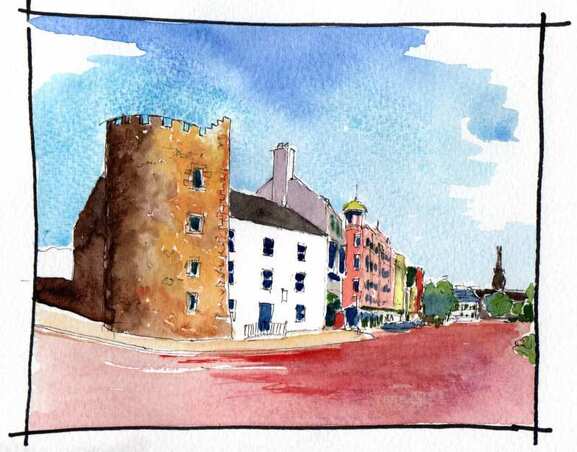
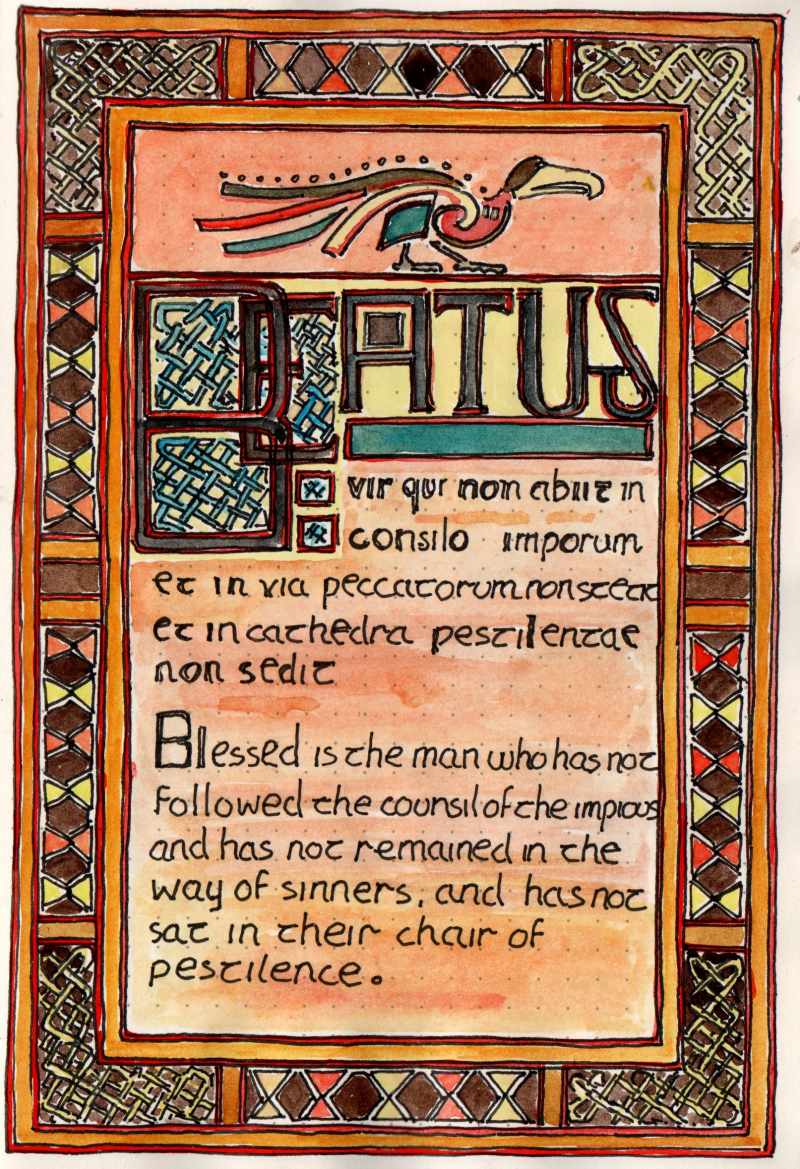
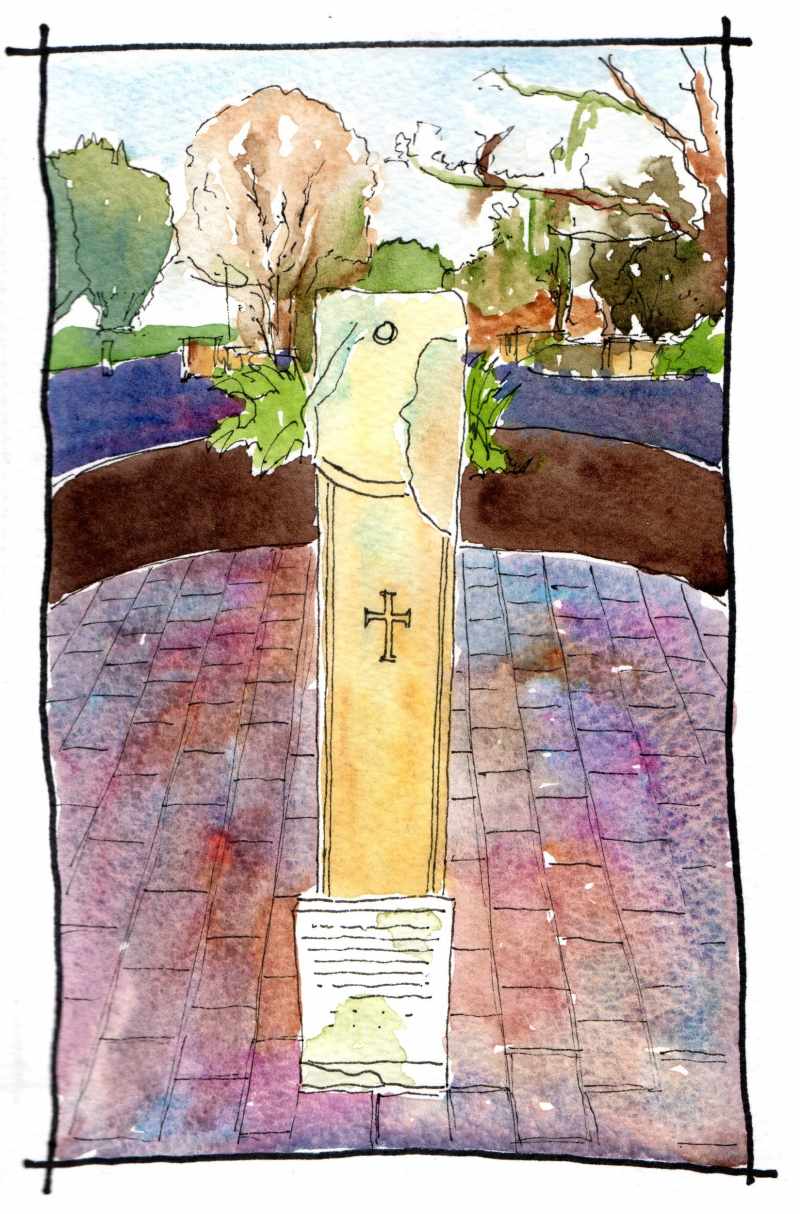
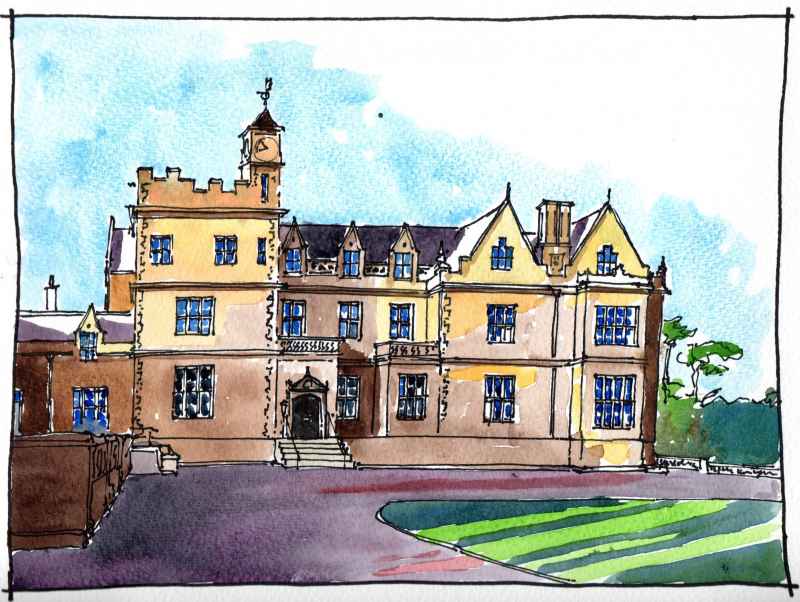
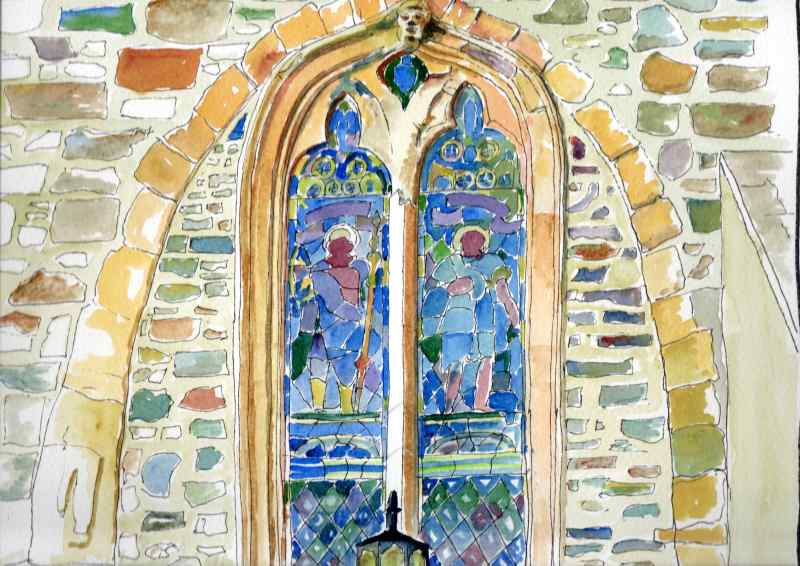
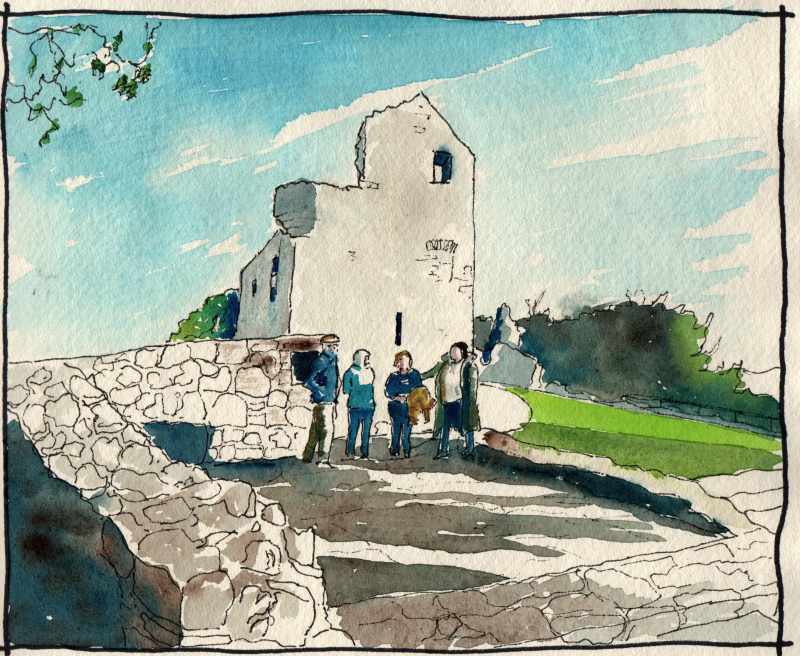
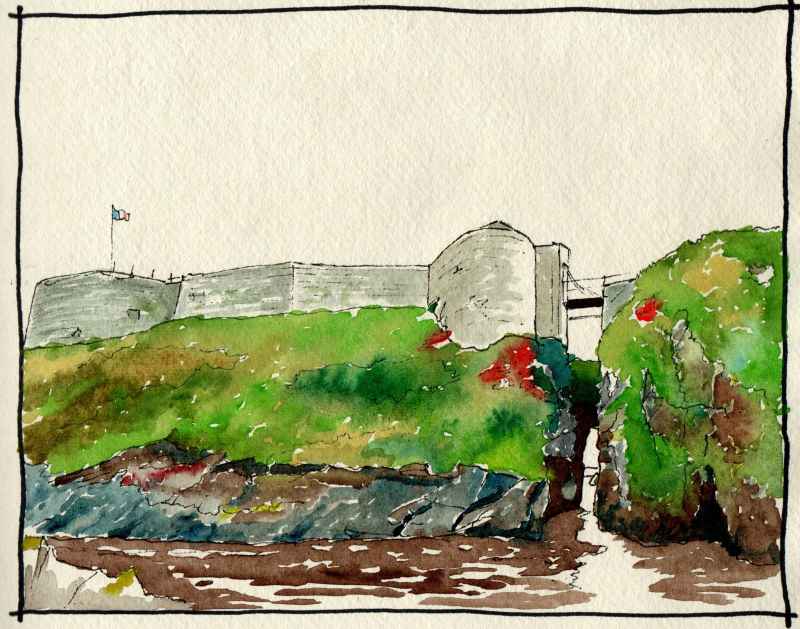
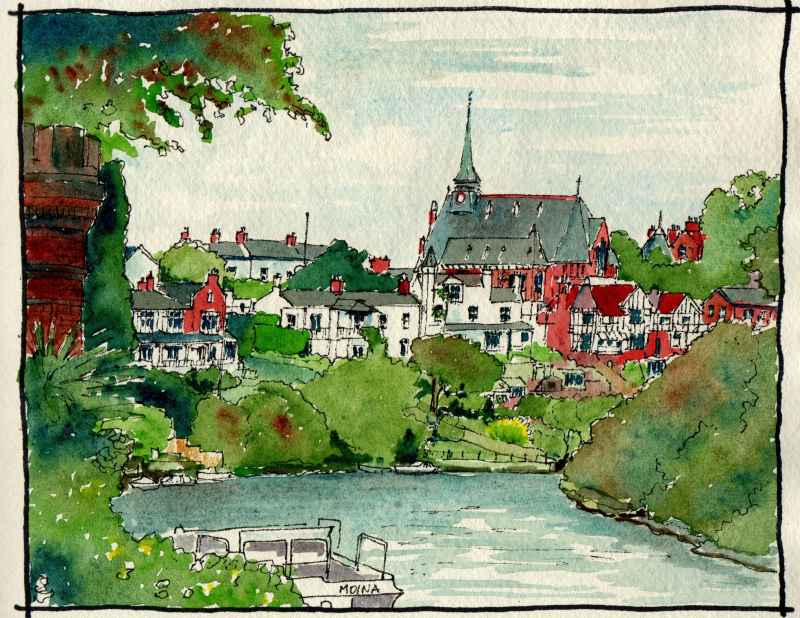
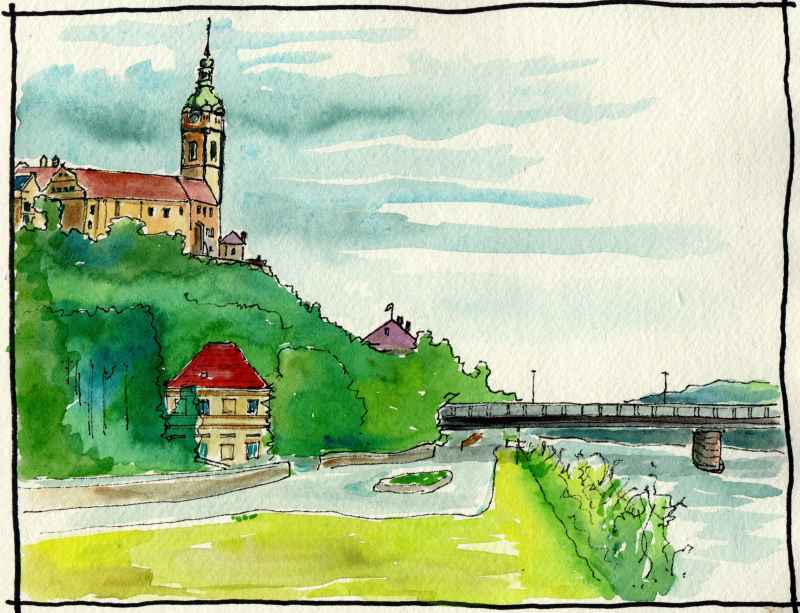
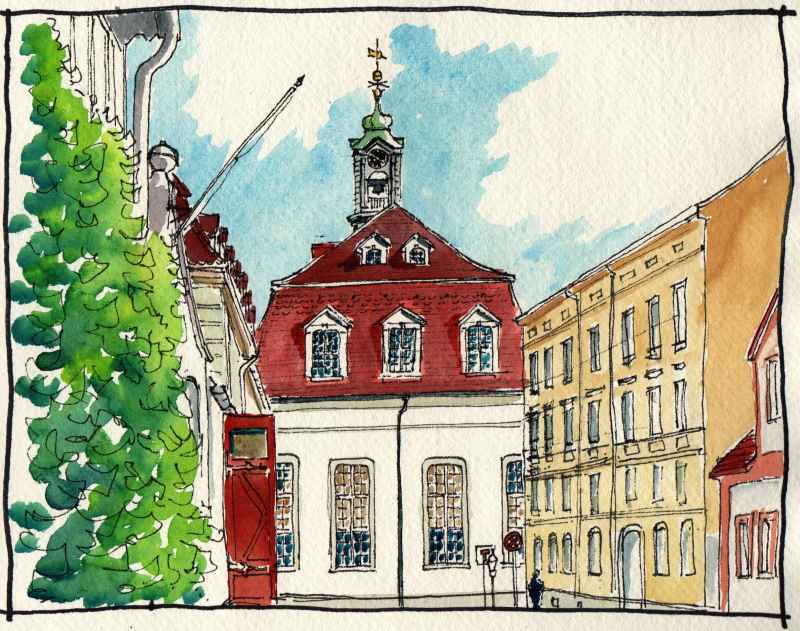
 RSS Feed
RSS Feed
